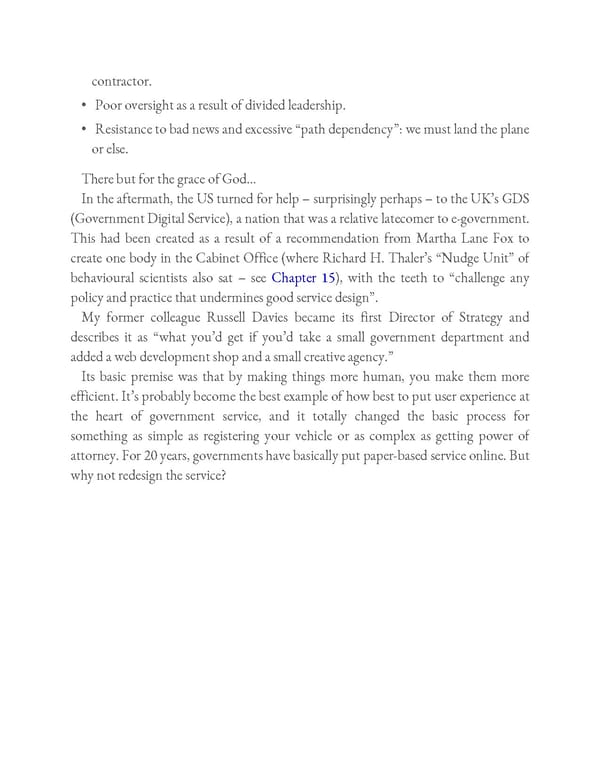contractor. • Poor oversight as a result of divided leadership. • Resistance to bad news and excessive “path dependency”: we must land the plane or else. There but for the grace of God… In the aftermath, the US turned for help – surprisingly perhaps – to the UK’s GDS (Government Digital Service), a nation that was a relative latecomer to e-government. This had been created as a result of a recommendation from Martha Lane Fox to create one body in the Cabinet Office (where Richard H. Thaler’s “Nudge Unit” of behavioural scientists also sat – see Chapter 15), with the teeth to “challenge any policy and practice that undermines good service design”. My former colleague Russell Davies became its first Director of Strategy and describes it as “what you’d get if you’d take a small government department and added a web development shop and a small creative agency.” Its basic premise was that by making things more human, you make them more efficient. It’s probably become the best example of how best to put user experience at the heart of government service, and it totally changed the basic process for something as simple as registering your vehicle or as complex as getting power of attorney. For 20 years, governments have basically put paper-based service online. But why not redesign the service?
 Ogilvy on Advertising in the Digital Age Page 333 Page 335
Ogilvy on Advertising in the Digital Age Page 333 Page 335